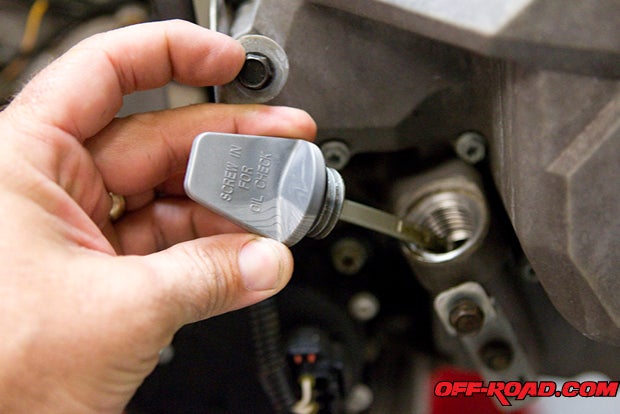 |
| As simple as it sounds, some riders forget to check their oil level. Without gas, your ATV won't run, and without enough oil, your engine will seize up and break. Double check oil levels for each ride. |
Whether it’s riding your favorite sport ATV or the big utility quad, you may want to consider a few things before each ride. I’m not saying you have to tear into the ATV every time you ride, but if you make a routine to at least check over the machine every other time you can save yourself a lot of trouble. This article, however basic it may seem, is intended to give readers and riders simple knowledge to either make a schedule or mental picture of things they need to keep an eye on.
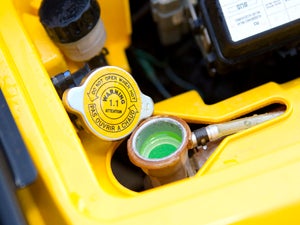 |
| Be sure to keep an eye on coolant levels. |
First off, the most important thing you can have is an officially licensed service manual from the manufacturer of your ATV. These little inexpensive books will give you the basic knowledge you need to either fix what breaks or at least know what the dealer is chanting when you have it worked on.
1. Oil and Coolant Levels
This is the life-blood of your ATV. Without oil, the engine is grinding to a halt within minutes of starting. Oil is the life-blood of your machine! I hope everyone gets that. With that said, the type of oil you use is also important. Using a thicker or higher viscosity oil in the summer time will insure that with hard riding and extreme heat the engine stays lubricated very well. A lower viscosity oil in the winter means the engine still gets the same great lubrication but the thinner oil can still get through the engine properly in cold temperatures.
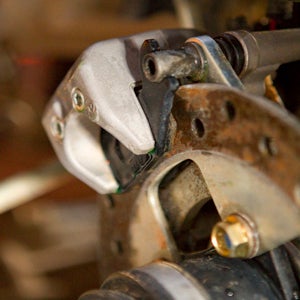 |
| Check your brake pads often. |
Finally, the correct level of oil on the dipstick means nothing is getting short-changed in the engine. The coolant in your machine, providing the ATV is liquid cooled, is another important item. Most will not take the time to check the coolant level. The summer heat is rough on the engine, and keeping the proper levels on both these items as well as changing the oil regularly will make the fun last even longer.
2. Brakes
There is nothing like hitting the trails hard with your buddies and finding out at the last minute, in the heat of battle as your friend stops in front of you, that your brakes have quit the job. That will leave you, your quad and your unsuspecting friend a few extra scars that will be unwelcome by all parties for sure!
Take the time to jack the quad up and slip a jack stand or two under the machine. Take the wheels off one end at a time and inspect them thoroughly. Look for things like small rocks and any trail trash and remove it.
Be sure that there is ample pad left on the brakes, which can be as much as a 1/4 inch thick to my limit of an 1/8 of an inch. I set the limit there because if the pad steel gets into the disc that’s just another expensive fix. Check those brakes!
PAGE 2
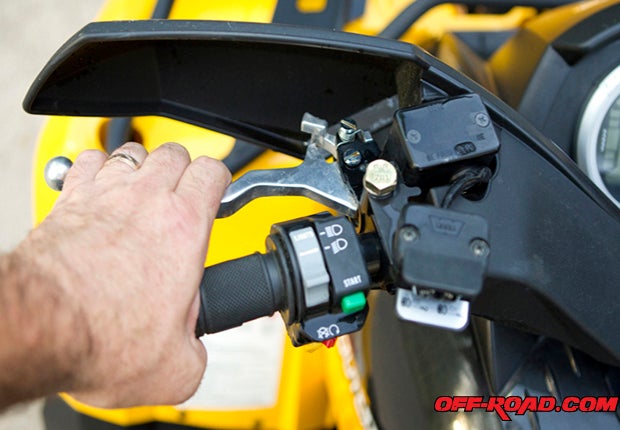 |
| Check the amount of play in the clutch lever not only for safety but for comfort levels. |
3. Levers
This is important because this is the main way in which you control the machine. The brake and clutch lever should have enough play that you’re not binding the brakes or engaging the clutch while riding. The brake lever needs to be firmly clamped to the bars so it doesn’t move when you reach for it. This sounds silly, but I have ridden ATVs where the brake lever would roll forward or back with little effort. That’s not cool! Tighten down both levers and make sure they are in a
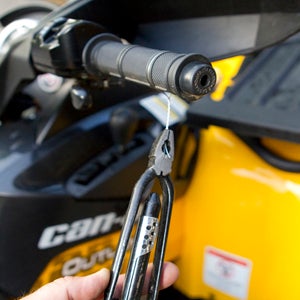 |
| Safety wire is one way to keep your grips on the handlebars, but simply re-glueing them is fine too. |
comfortable position for your ride. I always set my clutch lever cable tension so that when I grab the lever it will move just slightly before engaging the clutch. Some levers may vary but I think around an 1/8 to 3/16ths of an inch before engaging should be ok.
Again, be sure that the lever is tight on the bars and in a comfortable riding position. Make sure the brake reservoir is at the proper level as well. Also check to be sure the levers are doing their job. Checking the function ensures no surprises on the trail.
4. Handlebar Grips
This is a short but notable check on your ride. I hit the trail on a very cool and sunny weekend a few years back with some friends. After a few hours of riding, my nameless friend wanted to switch up machines just to see whose ride was better. I agreed and away we went along some tight riverbank trails. For some reason, I felt as if I really couldn’t push his ATV like I wanted. I had a gut feeling something wasn’t right, and boy, did I ever find out what it was. After a few corners the right grip pulled off in my hand. That was a very scary moment, and when I finally got off the ground to gather my mind I still had the bright yellow grip tightly in my hand. As he approached he yelled out “I forgot to tell you that the grip was loose and to be careful”!
Needless to say, this experience reconfirmed my belief in checking the grips often to make sure they’re still on the bars taught. Safety wire is an extreme measure to keeping grips on but it does work. However, just removing old grips as they become loose and either replacing or simply regluing them to the bars isn’t a difficult task. The bars that you trust the steering of the machine too should also be checked regularly and tightened to maintain control of the ATV.
PAGE 3
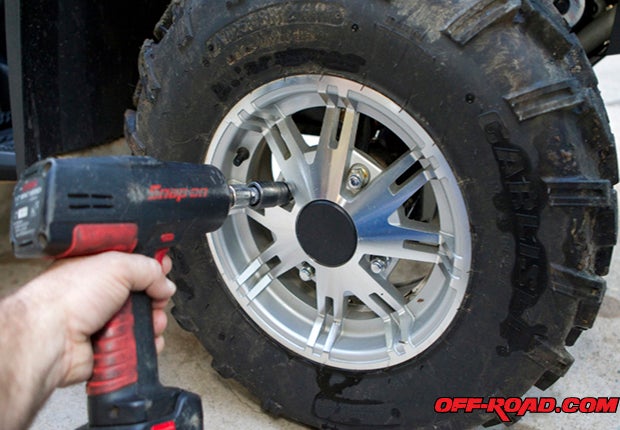 |
| The lugs on your wheels should be double checked every other ride. |
5. Lug Tightness
When a new quad hits the ground at your local dealer, it is in a crate and more than likely the wheels are sitting near or under the ATV and are not mounted just
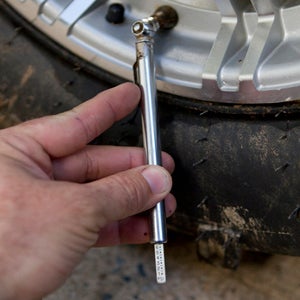 |
| Low tire pressure can hinder your ATV's handling and create an unsafe riding situation. |
yet. So hypothetically speaking, your friendly ATV porter takes the crate apart and starts figuring out the easiest way to get this unit together enough to get it on the sales floor so he can go to lunch. Maybe he forgets to tighten the lugs on the wheels of your new ATV – it doesn’t happen often, but it can happen. So if you don’t double check the tightness of lugs then whose fault is it if the wheels fall off during the very first ride on your prize possession? It’s just always a good idea to double check the lug nuts to make sure everything is snug.
6. Tire Pressure
Improper tire pressure can create a poor-handling ATV, and it can not only make riding difficult but can also put you in a dangerous situation if your vehicle doesn’t turn the way it should in a fast corner. Adding the recommended air pressure for the tires on your machine will make the trails a lot safer and more fun. Jumping an ATV with low air pressure invites many problems as well. The rim on a low tire can catch on the ground during a hard, out-of-center landing and roll the ATV. The tire could also become unseated on the rim, and that means your ride is over for the day. Most trail riders run between 6-7 pounds in the front and around 6 pounds in the rear. It’s all about feel too, as some riders prefer higher pressure for their riding styles. Just make sure there’s enough air pressure before you ride.
7. Overall Bolt-Nut Inspection
The final thing to do before a great season of riding is to check all nuts and bolts for tightness and function. If anything comes loose you will be the first to know it, and that’s not always the time to find out that your rush to ride didn’t get the results you wanted. Check all bolts such as the shock-mounting bolts and the suspension bolts. Also look at your quad’s safety gear like the heel guards and the swing-arm guards. These have small bolts that can loosen over time, and it will save you some money down the road to make sure the rear sprocket guard and brake rotor guards are in place. Take some tape and run it around the axel nuts to keep the threads clean and also to keep them from backing off each other.
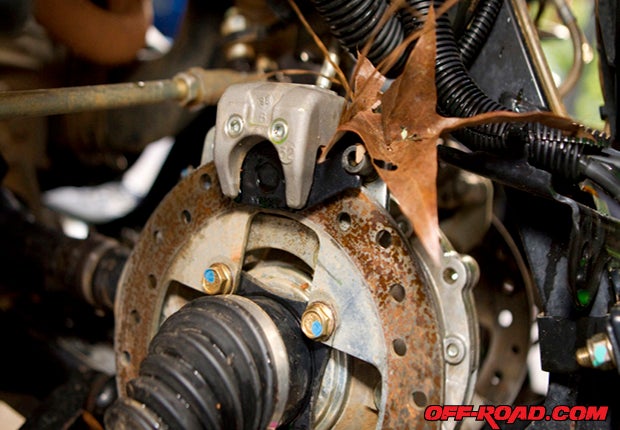 |
| Checking for debris lodged into your vehicle's internals is a good thing to do each time you ride. |
After double checking your machine and doing some basic maintenance you’ll ride safer and more confident knowing your machine is at its best when you’re on the trail. Why would you gripe about paying $5,000, $6,000 or $7,000 dollars for your machine only to let it fall apart each year you own it! Get a service manual and learn the machine that helps you enjoy the world we live in.
RS


 Your Privacy Choices
Your Privacy Choices